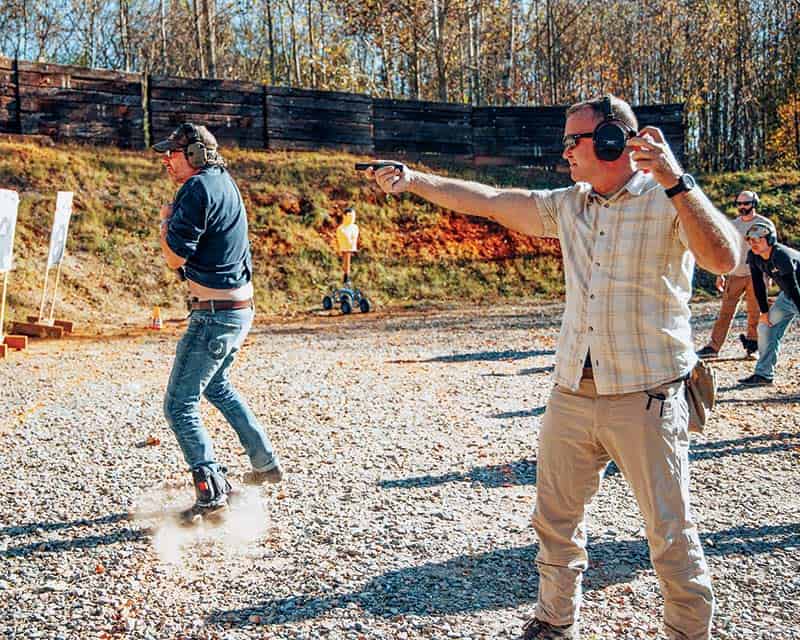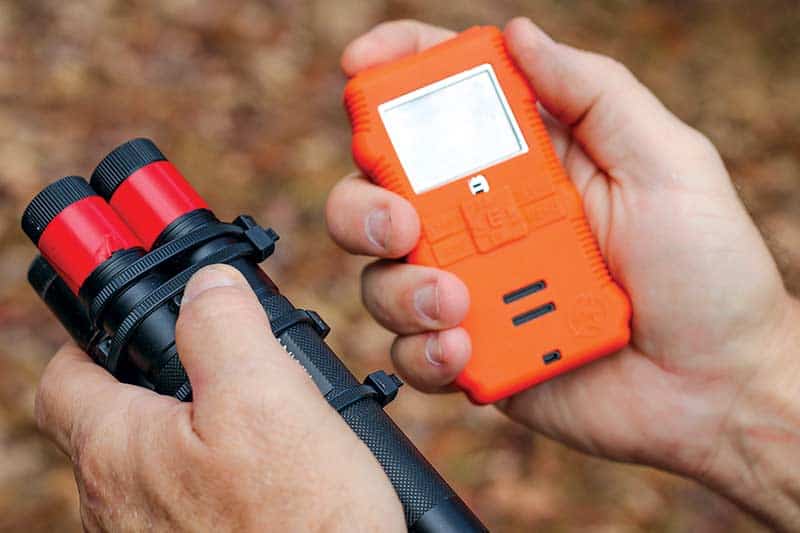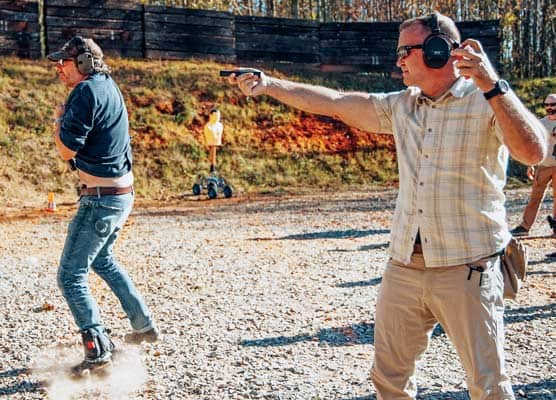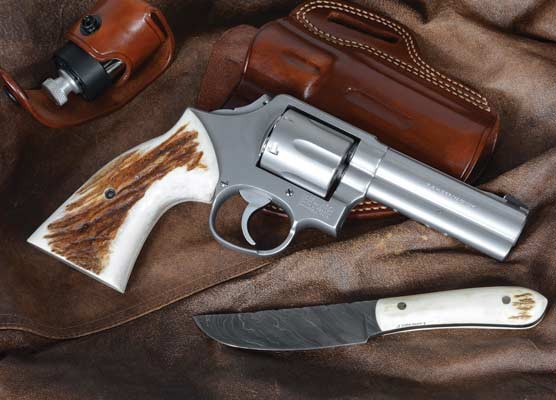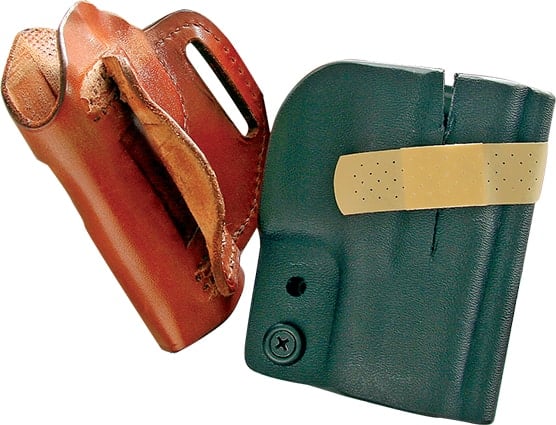Deadly Force:
Training with John Murphy
Thinking While Fighting
Thinking with a gun in your hand is a critical element in self-defense training. In the world of tactical self-defense training today, serious students speak of “the three Cognitive Johns.” In alphabetical order: John Hearne, John Holschen and John Murphy. They earned the “Cognitive” nickname because of the emphasis on thinking during a hostile encounter.
John’s background is extensive, including a decade as a Marine followed by 20 years at the Defense Intelligence Agency as a counter-terrorism analyst after 9/11. During those years, he trained on his own time and dime under three greats no longer with us: Pat Rogers, William Aprill and Louis Awerbuck. He went on to train with Craig Douglas, Greg Ellifritz, Tom Givens, Marty Hayes, Kelly McCann, Dave Spaulding, Tatiana Whitlock, me and many more. He taught part-time in the private sector beginning about 20 years ago and went full-time upon his retirement from government.
Holistic Approach
AMurphy class covers the waterfront. He talks about attitude and awareness, focusing on patterns of violent behavior, which he presents with video from security cameras, dashcams and bodycams of actual incidents. He shows students how to analyze criminal behavior and approach and dissects the fine points of what victors did to defeat their assailants or didn’t do. He emphasizes body language and words that will cause most criminal predators to “de-select” John’s students and decide not to attack them at all. He is a big proponent of pepper spray as an intermediate-level tool and teaches its use practically and exceedingly well.
Of course, he teaches appropriate use of defensive firearms and practical tips, such as an untucked checkered shirt to help conceal the full-size 9mm pistol he generally carries in an appendix IWB holster. An excellent shot himself, he demonstrates the importance of the first solid hit to stop a lethal encounter, but he emphasizes knowing when and how to make that shot. John also goes deep into verbalization and de-escalation.
Teaching the Cognitive Element
Making the decision to shoot — and to stop shooting, which can be just as critical — is a focus of Murphy’s work with students on the range. Like Holschen, he has found the cue that it’s time to fire is usually more visual than audible. He explains, “In 2019, I was using the lasers of a SIRT pistol on target as a start and stop cue, with red for deadly danger and green for safe. It occurred to me that I could do the same with laser pointers, and with two red and two green, I could cycle students through an entire spectrum of a defensive encounter.”
Murphy adds, “For the last two years, I’ve been using what I call ‘The Determinator,’ multiple laser pointers bundled together. I use them in conjunction with a CED 7000 gunshot timer. When I push the two green lights for the ‘shoot’ signal, I start the timer, leveraging the interlimb response element. When you come up to the firing line for qualification, you know how much time you have, but that’s not true in real life. If you have to see what’s happening and select a response option, it adds a quarter to a half a second to the first shot. When it’s time to cease fire, some people who show up proud of their 0.15-second splits will fire three or four shots after the stop signal. What we see on the range very closely mirrors the findings of Force Science Institute.”
The laser pointers give John eight signals to send to a student. A single green light indicates “Take the Bad Guy at gunpoint,” while two green dots indicate “Shoot!” Notes John, “Beethoven wrote a symphony with eight notes, and an instructor can replicate many suddenly changing circumstances with eight signals.”
Amidst it all, the student will verbally interact with “the voice of the target,” provided by another student behind them. Each student will take turns in “Good Guy” and “voice of Bad Guy” roles. In a typical class, the student will get some 300 rounds of live fire, all driven by rapidly changing circumstances, instead of simply “draw and shoot on the beep.”
Murphy understands anyone can be surprised and find themselves unexpectedly under a criminal’s gun. He has no illusions about the Good Guy being able to “beat the drop” against an alert opponent. He goes heavily into verbal compliance to make the criminal drop his guard, and he wants the student to be able to take appropriate defensive action once the deadly threat is distracted.
I’ve taken John Murphy’s training myself and found it excellent, as have many others. He teaches around the country, and his tuition is reasonable. Learn more about Murphy’s company at Citizen-Defender.com.
And those other two Cognitive Johns, Holschen and Hearne? You’ll be reading more about them and their training in upcoming issues.

